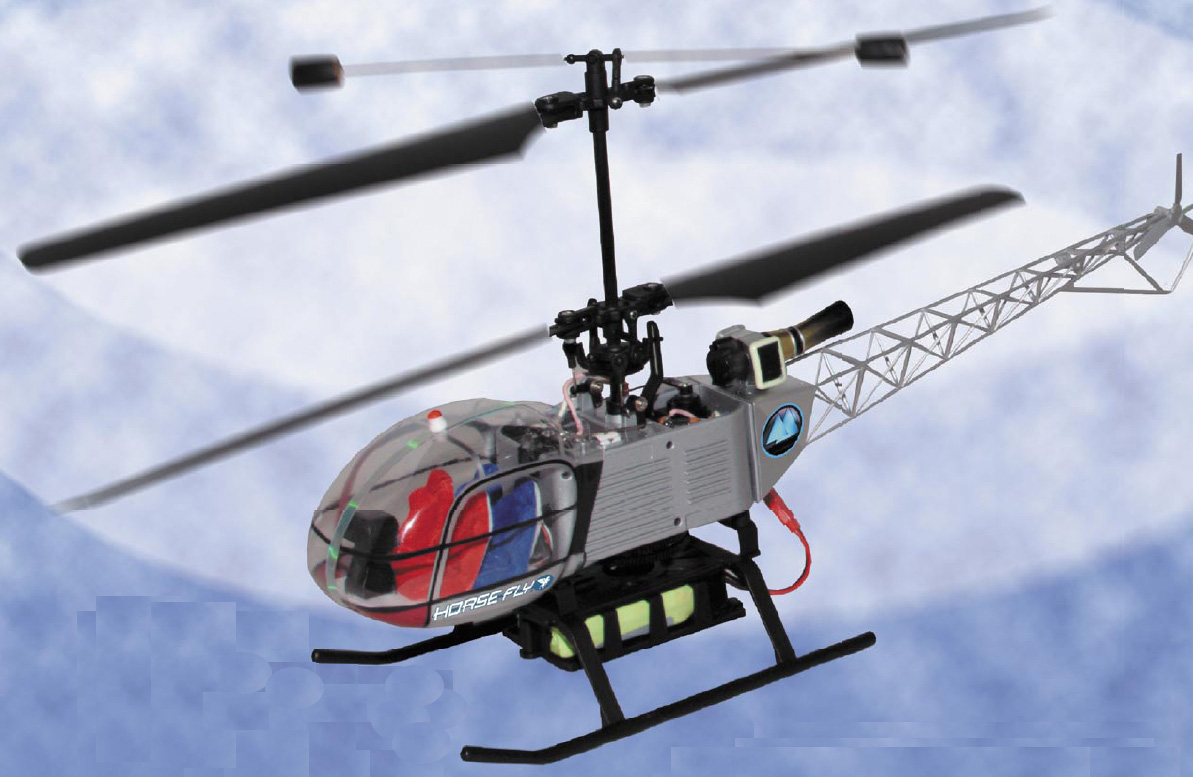Megatech Horsefly (aka Walkera Dragonfly #10)
The Megatech
Horsefly is an easy-to-fly helicopter with counter-rotating blades
(they spin in different directions.) The Megatech version is
basically identical to the Walkera
Dragonfly #10 (which has been replaced by the Walkera
Dragonfly #53), with the only real difference being the
decals. The Walkera-version heli and parts are about half the
price of the same items from Megatech. (I wish I had known that
from the start.)
Because of the counter-rotating design the heli is very stable in
flight, making it a good choice for beginning flyers. It's also a
fun heli for flying around inside the house (as long as people can
stand the noise). This heli is larger than most counter-rotating-design
helis out there, allowing it fly outdoors though a light breeze.
(Smaller helis can only fly outdoors if there's no wind at all.)
Probably the most popular heli of this design is the E-flite
Blade CX.
My experience has been that the green battery that comes with the
Megatech Horsefly or Walkera Dragonfly #10 is complete junk (and
expensive at that). I made the mistake of buying serveral of
these, and within a few months none of them would hold a decent charge.
On the other hand, I've had really good luck with the "E-Power
7.4V 1200mAH/10C" battery, which is so inexpensive ($18) that even
if it doesn't last it's cheap to replace. It's nice to have
serveral so you can swap them and keep flying. I use the the "Align
RCC-3CX" charger to charge these batteries. I use velcro to
hold the battery in place, with a rubber band tied across the bottom of
the battery cage for a little extra support. (Screwing and
unscrewing that battery door is way too much of a pain.)
A battery monitor like the "HRPoly-X low-voltage
warning device" from customidea.com
can be used to monitor the battery level to make sure that
it doesn't get too low. (Draining LiPo batteries too low can
damage them.)
Adjusting the blade tracking so they're properly aligned makes a big
difference in terms of how stable the heli flies. I like to use
the "slapping the paper" method: Mark the tip of each blade with
a magic-marker, red on one side and blue on the other. Get a
piece of paper, and with the heli weighted down (using a hammer or some
such across the skis) spin the blades at a moderate rate, and then
touch the paper to the blades. The red and blue marks will show
if one blade is running lower than the other, and the pitch links can
be adjusted until the marks come together. The procedure is
performed on the top and bottom sets of blades.
The best place I've found for buying parts
for this heli (as a Walkera Dragonfly #10) is hobbyjapan2000.com.
Click here to contact me
Return to previous page
